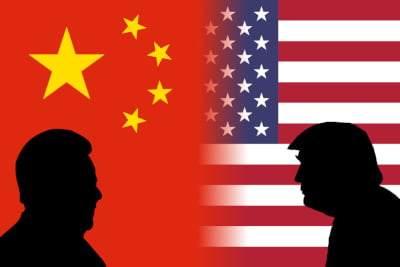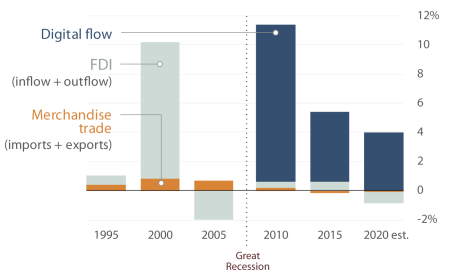
The United States recently announced 25% tariffs on over $2 billion worth of imports from six nations over their digital services taxes, but immediately suspended the duties to allow time for international tax negotiations to continue.

What made the USA take such action?
The U.S. Trade Representative’s office had approved the threatened tariffs on goods from Britain, Italy, Spain, Turkey, India, and Austria after a “Section 301” special report concluded that their digital taxes discriminated against U.S. companies. The potential tariffs aim to equal the amount of digital taxes that would be collected from U.S. firms.
The United States Trade Representative (USTR) investigated under Section 301 of the U.S. Trade Act, 1974, which authorizes it to appropriately respond to a foreign country’s action that is discriminatory and negatively affects U.S. commerce.
So, what is U.S.A.’s Special 301 report? It reflects principally on the annual review of the world state of holding Intellectual Property (IP) rights protection and social control. The review reflects the Administration’s resolve to encourage and maintain facultative environments for innovation, together with effective scientific discipline protection and social control, in markets worldwide, that profit not solely U.S. exporters however the domestic scientific discipline industries in these markets additionally.
According to the report, India’s Digital Service Tax (DST) is discriminatory in 2 ways: first, it specifically excludes Indian digital businesses from its ambit; and second, in keeping with the report, the DST doesn’t be identical services provided by non-digital service suppliers.
What is India’s say in this?
U.S.A.’s notion that India’s DST is biased is not true. In the given scheme of things, most massive technology firms are U.S.-based. In keeping with USTR, are 119 firms within the world would probably be subject to the DST, of that, 86 are U.S. companies! So, it might seem to the U.S.A. that the DST is biased. Indian digital service suppliers won’t pay the DST owing to the specific exemption within the law (of course, they’re subject to Indian income tax).
Which other countries are in this club?
France imposes 3% DST. In the Association of Southeast Asian Nations (ASEAN) region, Singapore, Indonesia and Malaysia impose a DST with Thailand announcing forthcoming plans to tax its foreign digital service providers. Hold on, there’s more. Negotiations are underway at the Organization for Economic Co-operation and Development (OECD) involving 140 countries to overhaul International Tax rules given the fast growth of Internet economies.

The Story so far
With the advancement of technology, high-speed internet, and broadband services traversing the world, a company can run its operations smoothly without the need to be physically present in a particular country. A retail store in France can sell apparel directly to Indian customers without having a single storefront or an actual salesperson! A gaming giant located in South Korea can have players all over the globe assemble on its platform through remote servers. A streaming giant in the USA can send its content digitally anywhere, anytime without a hitch.
As more and more companies join the crusade, it becomes exigent for governments to do something off the cuff. Because operating out of a foreign country allows companies to avoid paying tariffs in other jurisdictions even when they might be tending to customers there. Keeping aside the obvious fact that that the local government might lose on tax revenue, there’s another issue that cannot be neglected.
Now, let’s place India, under the spotlight. The Government of India wants local businesses to compete on equal footing with their global peers. But this is rather impossible when the regulations allow the latter to operate in the country tariff-free. Granted the foreign company will have to pay tax in its country of origin; but more often than not, corporate tariff rates are much lower elsewhere than our country. So clearly and obviously the local businesses are at a disadvantage here and this was certainly not acceptable to the government of India.
So, what should be done? Let’s go back to 2016.

In the year 2016, India’s finance minister pledged to make non-resident e-commerce operator pay their dues. The government revealed the Equalization Levy, a Law that allowed to add 6% tax on non-resident internet companies for advertising services rendered to Indian businesses. This was known as the Digital Advertising Taxes (DATs) or popularly Google Tax, as a bulk of online advertising expenditure could be attributed to the search giant. And soon enough, hefty sums of money started pouring into the Government treasuries (Rs 550 crores in 2017-2018). Most Internet Companies thought that this would be the end of it.
What is the issue now? What is Digital Service Tax (DST)?
Everything was running peacefully until the Government of India, in March 2020 expanded the scope of the existing Equalization Levy to a range of digital services that includes e-commerce platforms. Any payments made by non-residents in connection with an Indian user will attract a 2% levy, ouch! This tax will kick in when the goods or services are supplied to an Indian resident, or when they are ordered through an Indian IP address. So if there are individuals and businesses out there ordering goods through say, an Amazon U.S or booking a hotel room through a foreign website, they must pay this tax in full.
Let’s understand who exactly a non-resident e-commerce operator is. It refers to a non-resident (foreigner) who owns, performs, or manages an electronic platform for the online sale of goods or online provision of services, Amazon, Netflix, Cloud services are few examples.
Do we need to be concerned? Why?
Eventually, it might burden Digital consumers. Experts suggest that DST can be passed on to consumers. While the Indian customer may not pay this as a tax, this could mean higher prices, contrary to that it taxes the Company. So, just wait and see if this additional levy will be passed on to consumers and end up adding a little extra burden to your Netflix bill, eh?
On the heavier side, the USTR investigations could pose a serious threat of retaliatory tariffs, as similar tariffs were imposed by the U.S. on France. The U.S. is India’s largest trading partner and with whom India has a Trade Surplus (India’s net export is more than net import with the U.S.), this step could seriously wound the nation’s economy.
Furthermore, this could turn into a digital trade war-like situation and could harm India’s Information and Communication sector.




